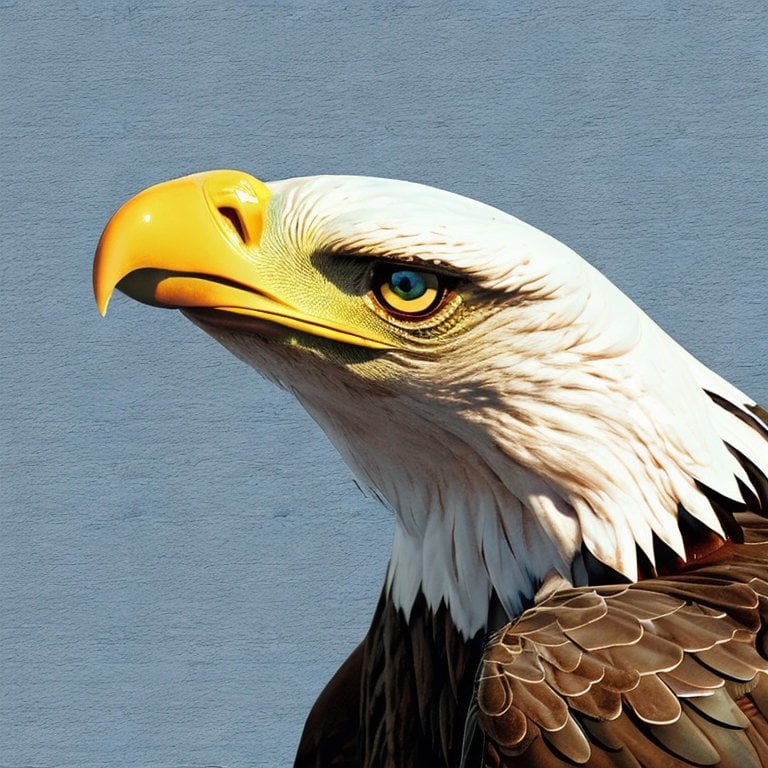Just wondering since I know a lot of people quietly use a screen-area-select -> tesseract OCR -> clipboard shortcut.
- I separate subjects of interest into different Firefox windows, in different workspaces – so I have an extension title them and a startup script parse text to ask the compositor to put them in the correct workspace (lets me restart more conveniently).
- I have automatically-set different-orientation wallpapers for using my 2-in-1 depending on whether I use it in portrait or landscape (kind of just for looks, but I don’t think if anyone else adds a wallpaper change to their screen rotation keybind).
I use KDE’s defaults.
That’s sick man! Get some help!
I use Gnome defaults.
With Gnome you have no other choice.
Gnome is very much built around customization lol
I made a user for my partner
I also have a user for your partner
Haha!
Take my poor man’s gold
🏅
Does stuff I wrote myself count?
Apache server that has a bunch of webpages that are all configured by simple JSON files and loaded by PHP. The pages have buttons on them which when pressed enter macros. So I push “Deploy Landing Gear” and Shift+alt+F8 or some obscure as fuck combination no one would ever use normally gets pressed and the game can be set to use that keybind. Most of it is for simple immediate key presses but also made a few for macros as well.
The HTML/PHP that runs the show is a grand total of 2018 bytes, including comments. Plus a fairly bloated 2444 byte CSS file that includes some button colour options that I never use now because I decided they look ugly. Should update some of the background images though, my sheet steel Faulcon DeLacy logo looks a bit basic.
Machined badge reading “Built Not Bought”.
My dad used to put them on the cars he built.
My dad used to put them on the cars he built.
That’s pretty rad.
He was a rad guy.
My applications menu icon (or the “start” menu for the philistines) is a 🐢.
based
Maybe a bit plain since I’m only at mediocre level in my Linux journey, but I use my favorite fonts for Kitty. Recursive Mono Linear and then for italics and comments in neovim I use Recursive Mono Casual Italic.
Recursive Linear is so tidy and neat, with just the lightest touch of personality. And Casual keeps that style but tweaks it just ever so slightly to a more comic. And they have sans versions of both as well for everything else.
I also made my own Starship prompt to match my desktop. It runs an easily reconfigurable color palette and uses color coded chevrons to denote different git statuses.
While I doubt the concept is unique, the script is: a keyboard shortcut will check the clipboard for a YouTube link and then show launcher options for
mpvoryt-dlp, including launch arguments for lower quality format and audio only. It launches that in a terminal for easier handling when yt-dlp doesn’t work properly (much more common if using proxies, but also if a video is age-restricted or deleted).So when I see a yt link here, I can just copy it, keyboard shortcut and then it’s playing in my local video player.
edit: here’s the script. It assumes
xsel(clipboard access),rofi(menu creator),gnome-terminal(terminal) andnotify-send(system notification on failure) are installed and working, you’ll need to replace any which don’t match your system. My DE just runs it in bash when the shortcut is entered.Code (click to expand)
#!/bin/bash ARR=() ARR+=("mpv full") ARR+=("mpv medium") ARR+=("yt-dlp") NORMAL_URL=`xsel -ob | sed -r "s/.*(v=|\/)([a-zA-Z0-9_-]{11}).*/https:\/\/youtube.com\/watch?v=\2/"` CHOICE=$(printf '%s\n' "${ARR[@]}" | rofi -dmenu -p "mpv + yt-dlp from clipboard") DOWNLOAD="false" MPV="false" OPTIONS="" if [ "$CHOICE" = "mpv full" ]; then MPV="true" fi if [ "$CHOICE" = "mpv medium" ]; then MPV="true" OPTIONS+="'--ytdl-format=bv*[height<721]+ba' " fi if [ "$CHOICE" = "yt-dlp" ]; then DOWNLOAD="true" fi if [ $MPV == "true" ]; then COMMAND="mpv $OPTIONS $NORMAL_URL" gnome-terminal --title "$NORMAL_URL" -- bash -c "echo $COMMAND;$COMMAND;if [ \$? -ne 0 ]; then notify-send 'yt-dlp failed' $NORMAL_URL; bash; fi;" elif [ $DOWNLOAD == "true" ]; then COMMAND="yt-dlp $OPTIONS $NORMAL_URL" gnome-terminal --title "$NORMAL_URL" -- bash -c "echo $COMMAND;$COMMAND;if [ \$? -ne 0 ]; then notify-send 'yt-dlp failed' $NORMAL_URL; bash; fi;" fiUh this sounds awesome, care to share?
Now added to my comment :)
Uh I would be interested in that actually! Nowadays Youtube generates lots of problems with freetube due to their cookie bullshit and I feel with mpv(yt-dlp) in cli I at least have the option to see whats going on.
Now added to my comment :)
Same
Now added to my comment :)
Thanks!
I boot on a custom EFI app to control my dualboot (instead of systemd-boot or grub) that asks a service on my proxmox server which OS I’m supposed to boot.
Overkill, but it allows me to control my dual-boot without a keyboard in my computer (because it’s a Bluetooth keyboard so I can’t really use it in grub anyway)
A custom EFI app? Is that like a handrolled Unified Kernel Image with some Proxmox-specific addons in it? How’d you make it?
No, it’s a EFI app I developed in Rust that does a query over multicast UDP and uses the result to select which EFI app (Windows bootloaded (yeah I know…) Or systemd-boot to start Arch)
There’s nothing related to proxmox itself, it’s just there that I host my LXC with the service that responds to the quey.
When I press Super + PrtSc, a bash script performs the following:
Takes a screenshot of the entire desktop (import -window root) and saves it as ~/screenshot.png…
Analyzes the screenshot to calculate the “mean brightness” value of the image. It converts the image to grayscale and determines the average pixel brightness (a value between 0 and 1, where 0 is black and 1 is white).
Checks if the image is dark by comparing the mean brightness to a threshold of 0.2. If the mean brightness is less than 0.2 (i.e., the image is very dark), it applies a negative filter to the image (convert -negate), effectively inverting the colors (black becomes white and vice versa).
Sends the image to a printer (lp command) named MF741C-743C for printing.
an actual print screen, finally
A kind of ‘super’ print screen, in fact.
why?
Honestly I print out anything my little kiddo does at school on his Chromebook, and some stuff has black backgrounds. I got tired of wasting toner so I made a script that would print a negative screenshot if it’s a dark image. One keystroke and I get what I want
That’s a really neat use case!
And a very clever implementation.
I’m one of at most a handful people in the world with a full disk encrypted Steam Deck and unlocking using the touchscreen.
Until someone implements https://github.com/ublue-os/bazzite/issues/464 in Bazzite.
I have Syncthing set up to copy save data between my pc and steam deck, but not just for emulator stuff: its got my entire modded minecraft directory and my balatro modloader nn there too.
Syncthing is great and incredibly easy to use. I have mine set to sync my Obsidian notes so I don’t have to pay for the official service.
I have tried multiple different open source note apps that offer free local sync, but I can’t find anything I like. It frustrates me because I love open source.
Take a look at the Self-Hosted LiveSync plugin for Obsidian. Requires some self hosting for a sync server, but it is damn flawless. I have my phone, desktop, laptop, and work laptop, all syncing through it. Syncs live too, so you can even see me typing on one device from another
I use the same setup with Syncthing and Obsidian. The git plugin sometimes gets confused, but nothing I can’t untangle. I also use Syncthing for pictures off my phone, and ebooks onto it.
Actually, I think I do have a setup that might qualify as unusual: I use the scheduled backup feature of Podcast Addict to get a listing of listened podcast episodes, and then I inject them into my Obsidian notes.
I am indecisive when it comes to wallpapers so I have a script somewhere which accepts tag-words as arguments and then scrapes wallhaven.cc for those words at the resolution of my setup and picks one that contains those words at random before downloading it to my wallpapers folder and setting it as my wallpaper image.
So for example, you could just know you want something blue so you would run
wallpaper blueand it just grabs one and sets it. You could get a wallpaper of the sky, of a blue car, of the ocean, whatever happens to be a wallpaper that met the criteria of the word/s supplied.I’ve got a RPI running a full-screen ‘kiosk’ view from homeassitant that turns an external display on/off based on a motion sensor.
So basically it’s showing current temperatures, thermostat control, etc. but I have the display turn off after X minutes of no movement and turn on when there has been movement so it’s only on when you’re in the room.
I’d love to see your implementation specs, code, pr any other technical details you’d like to share. I’m setting up home assistant and one of the things I want it to do is replace the functions of my thermostat and add some additional details.
I used to have a Nest Thermostat, but my furnace needed to be replaced a couple of months back and I got a Mitsubishi heat pump, but their thermostat sucks, and it isnt compatible with Nest because it’s all wireless. I installed the WiFi add-on to the furnace so I can use the app, too, but it also sucks pretty bad. Plus I miss the functionality of it turning down the heat when I’m away to save money and turning it back on before I get home.
So I’m planning to implement my own solution and documenting and open sourcing everything. But it’s going to be several months before I get to doing it due to other more urgent projects. So, I’m looking at everything available. I definitely will be setting up a small display to replace the thermostat and having motion detectors to turn on the display when you approach it to see the temperature and such and to supplement the home/away detection.
Anyway, I would love to see your implementation to see how you did this piece of it.
It’s really quite simple - but works pretty well. There are 3 components:
Kiosk service
A simple systemd service that starts a kiosk script.
[Unit] Description=Kiosk Wants=graphical.target After=graphical.target [Service] Environment=DISPLAY=:0.0 Environment=XAUTHORITY=/home/pi/.Xauthority Type=simple ExecStart=/bin/bash /home/pi/kiosk.sh Restart=on-abort User=pi Group=pi [Install] WantedBy=graphical.targetKiosk script
The script in /home/pi/kiosk.sh just starts a web browser in full-screen mode pointed at my home assistant instance:
#!/bin/bash xset s noblank xset s off xset -dpms export DISPLAY=:0.0 echo 0 > /sys/class/backlight/rpi_backlight/bl_power LANDING_PAGE="https://homeassistant.example.com/" unclutter -idle 0.5 -root & /usr/bin/chromium-browser --noerrdialogs --disable-infobars --kiosk $LANDING_PAGEDisplay service
I have a very simple python/flask service that runs and exposes an endpoint that lets you turn on/off the display. It’s called by a homeassistant automation for when the motion detector senses or hasn’t sensed movement.
Here’s the python - I have this started from another “kiosk.service” systemd service as well.
#!/usr/bin/env python3 import subprocess from flask import Flask from flask_restful import Api, Resource def turn_off_display(): with(open(backlight_dev, 'w')) as dev: dev.write("1") def turn_on_display(): with(open(backlight_dev, 'w')) as dev: dev.write("0") class DisplayController(Resource): def get(self, state): if state == 'off': turn_off_display() elif state == 'on': turn_on_display() else: return {'message': f'Unknown state {state} - should be off/on'}, 500 return {"message": "Success"} def init(): turn_on_display() if __name__ == "__main__": init() app = Flask(__name__) api = Api(app) api.add_resource(DisplayController, '/display/<string:state>') app.run(debug=False, host='0.0.0.0', port=3000)You can then have the HA rest action call this with “http://pidisplay:3000/display/on” or off.
I’m using XFCE with Compiz, and since I have two monitors I have a 3D octagon instead of a 3D cube desktop.
I have an old gamer keyboard with extra programmable keys on the side, which I use for cut, copy, paste, close tab, close window, etc. Logitech provides drivers/software for Windows & Mac only.
To make it work I have a custom monkey-patched USB driver that I compiled from source, some weird daemon that interacts with the driver and some shell scripts on top of that. I’m not sure how but it works thanks to a 9 year old youtube video made by a guy from eastern europe somewhere.
Awesome…
Care to share the video/code?
I actually have something similar (Corsair Scimitar’s macro customizer doesn’t work on LinuxAs I was writing this I found a project that deals with Corsair MMO mice on Linux so now I will be going on an egg hunt.
video https://www.youtube.com/watch?v=8gAT-BbyOWw
code https://github.com/Leproide/Linux-G15-Daemon-Logitech-G110-
I’m pretty sure it will only work with a handful of old Logitech keyboards.
When I eventually upgrade my OS and can’t compile the stack for some reason, I’ve got a Sun Type-7 waiting in the wings.














